Noisy Decent Graphics
A series of blog posts by Ben Terrett about me | archives | atom feed
« October 2008 | Main | December 2008 »
Nov 27, 2008
Happy Thanksgiving
Posted at 06:20 in Seen and heard | Permalink | Comments (3) | TrackBack (0)
Nov 22, 2008
Look what I've got
Posted at 22:58 in Stuff I'm Reading | Permalink | Comments (5) | TrackBack (0)
Nov 20, 2008
At last, a senisble, humorous, relevant tagline.
Posted at 16:36 in Seen and heard | Permalink | Comments (9) | TrackBack (0)
Nov 19, 2008
Please recycle this post when you've read it
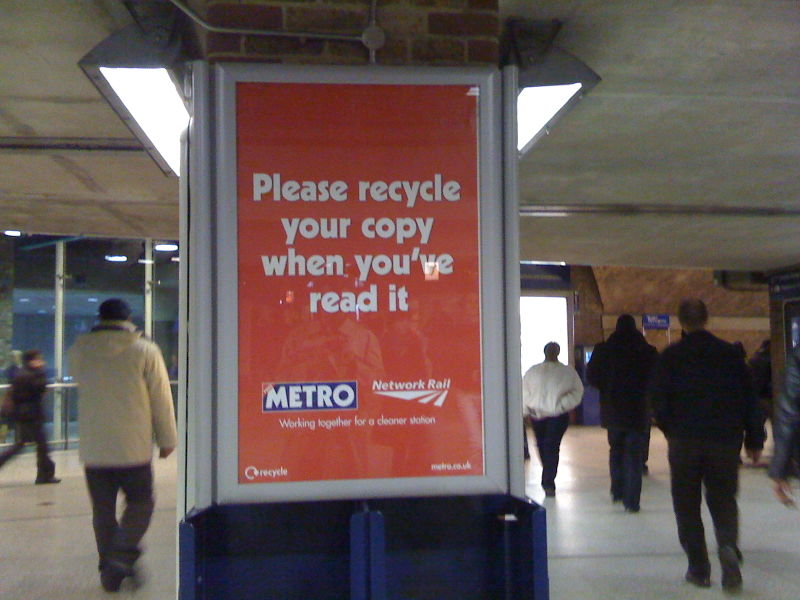
How about Please Provide Some Fucking Recycling Bins Then You Large Media Owner?
I hate these bloody free papers. Really hate them. They are full of rubbish, they are cheap in every sense of the word and you can't move for the fucking mess they make.
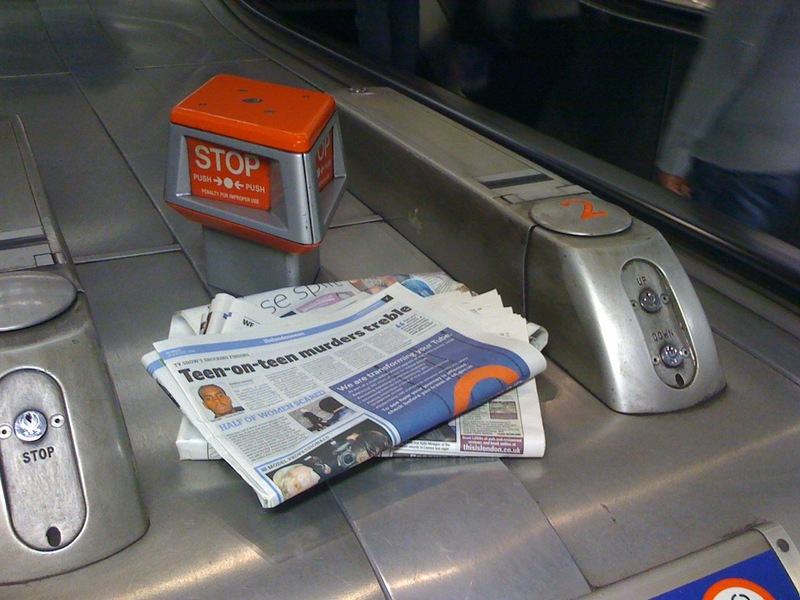
And it really angers me that you can't get people to go to the trouble of spending 30-100 pence to read a decent newspaper with proper stories about the world, but give them a FREE one and they'll read puffed up press releases til the cows come home.
So where the hell am I supposed to recycle this thing? Am I expected to carry this object of no value around with me until I get to the recycling bin at work? If you're gonna preach about recycling the least you could do if provide one. Surely a great big recycling bin at every Tube station would be a Good Thing, a Useful Thing and a Media Space Opportunity Thing. I can't be the first person that's thought of that.
Richard once told me that HHCL / Red Cell once worked on some ideas for The London Paper. A product designer had the idea of putting a hole at the top and bottom of the paper so that when you folded it up it was easy to carry around. So you'd be more likely to carry it to work to recycle it. They also wanted to hang them papers inside the Tube carriages to encourage reuse.
So stop preaching and let's see some action.
Posted at 10:50 | Permalink | Comments (17) | TrackBack (0)
Nov 18, 2008
Inspired by Design
I was on a panel last week talking about design to 800 design and technology A level students. Some younger ones too.
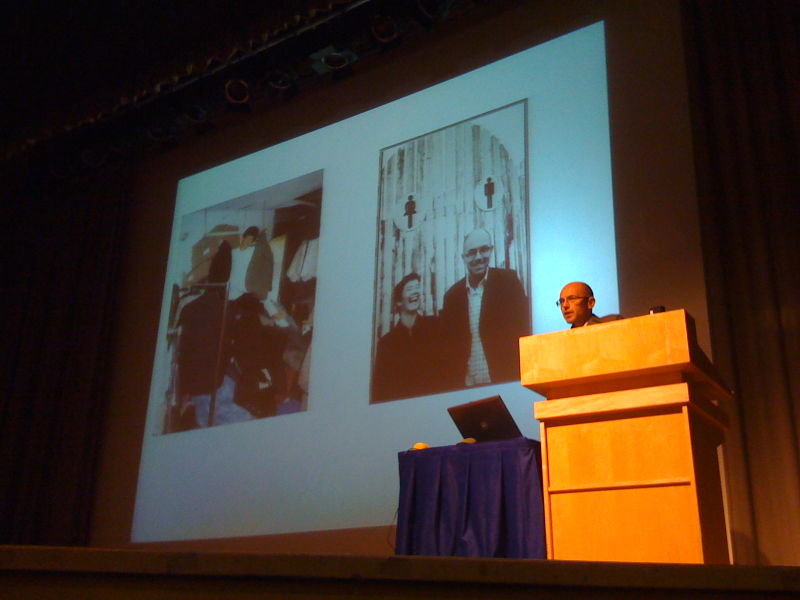
Wayne Hemingway was up first. Always good value for money. Nice and provocative too. Although he made me realise that the Big Breakfast was well over 10 years ago. So the audience were probably 5 years old when his slot on BB used to air.
And he slagged off Bros which upset me. Because Bros were great. Honestly. Watch this and tell me you're not dancing round the office.
Jason Iftakhar was also there and he was brilliant. He had lots of 'Ooh I wish I'd done that' work. This chair/bench for example.
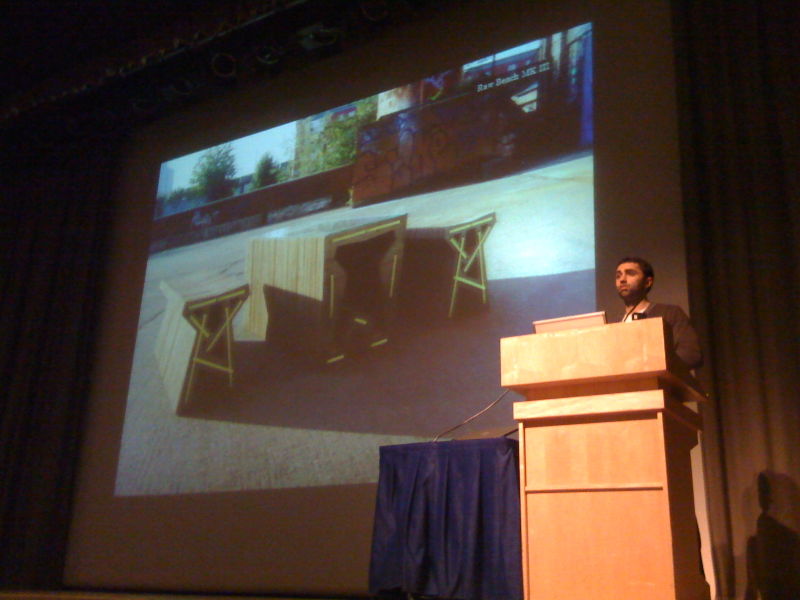
This is made from compacted cardboard. He persuaded Sainsburys (and other supermarkets I think) to let him put a tool inside their waste cardboard compacters that cuts these chairs. For free! Obviously they give him the cardboard for free, they let him cut the chairs and then he does them a favour by taking the chairs away! Something like that anyway. Brilliant.
He's also got some great packaging that's made from the old cardbaord boxes Argos Direct use. He has a factory in Manchester that's across the way from Argos Direct and they give him all their waste cardboard. For nothing! All clever stuff. Have a look at his site, there's lots of really interesting bits in there.
He had this great quote, "If you want to make a product cheaper, reduce the number of parts". That seems true of many, many things.
I had a really good day. And it made me realise (again) how important it is to get out and talk to students. They get so little contact with industry and they are so happy and enthusiastic when you go and speak to them.
So I want to do more of this. If you're a college or a school, drop me a line I'd be more than happy to come and talk to some of your students. (Is that arrogant of me? Too late, I've said it now...)
Posted at 08:19 in Conferences / Speaking, How To Get A Job In Graphic Design (Kind Of) | Permalink | Comments (6) | TrackBack (0)
Nov 16, 2008
Angry Logo Roundup
Right then, recession week over, angry head on. Three logos I hate and one that's not good, but it's better than what went before.
First up, Channel Five.
I really can't stand this. Channel Five (or Five as I suppose it's now called) have a history of terrible branding and this is no better. And it's certainly no better than what went before. So why bother changing it?
To be fair it's better when it's animated on screen, which is it's main usage, but overall it's dull and lifeless. It has no punch, no point, no edge. It feels flat and very ordinary.
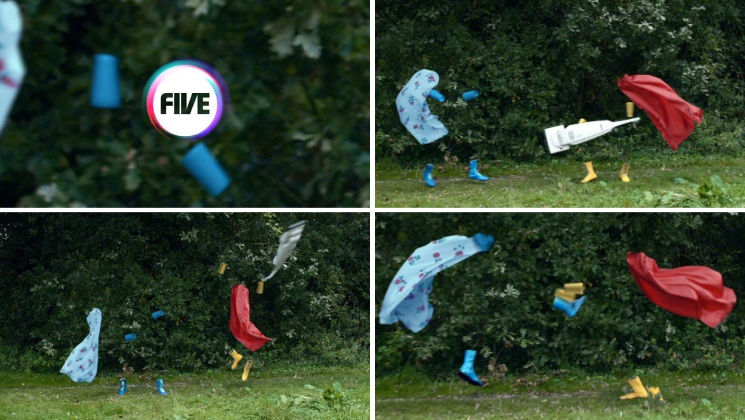 Five branding by DixonBaxi all images taken from their website. Usual rules apply.
Five branding by DixonBaxi all images taken from their website. Usual rules apply.
Museum of London.
If you'd have told me about this over the phone, I'd have said that I loved the idea. I think the idea of having three logos that come together to form one is clever and solves one of the biggest problems the organisation faces, getting people to link all three museums. This bit “The colour palettes of Museum of London Docklands and Museum of London Archaeology’s new logos, feed into the layers of the main brand mark, creating a family of three destinations, united in a single mission: to inspire a passion for London.” is good. Very good.
Brave idea, good thinking - it's just a stylistic mess.
It's looks too now, too of the moment. It looks like it wants to play with all the other swirly rubbish logos around at the moment. And that's not a good thing.
It's like the confidence of the idea didn't come through in the execution which is a tragedy. Coley Porter Bell are one of the big names of graphic design; this is an opportunity missed.
Creative Review have more on this.
Barclaycard.
Fucking hell. Where do we start with this? Awful. Meaningless. Irrelevant. Confusing. Ugly. What's the point? And why is that bloody Y floating in mid air?
Logo by the Brand Union, another big name. Again Creative Review have more on this. Check out the comments.
Currys.digital
Now here's an odd one. We've talked about Currys before and their awful renaming, rebranding exercise. But let's recap quickly. Dixons and Currys rebranded all their high street stores as Currys.digital. it looked like this.
Pretty bad, huh? So imagine my surprise when I saw this the other day.
Not fantastic, but it's a lot better. A great improvement. But what's going on? I haven't seen this anywhere else. It turns out that Dalziel & Pow are trialling a new store format. It's being trialled in 25 stores up and down (and presumably across) the land.
This bit sounds interesting, "What you'd see as a customer would be grid layout of the store as opposed to the old herring bone, so when you walk in you will immediately have clear line of sight right to the other end of the store, we have much better clarity with the signage and the look of the stores."
I haven't seen anything in the design press, so we'll see how all this develops. As I said, not fantastic, but a lot better.
So, what do you think? Like any of those logos?
I have the courage of my convictions and so I've linked to all of the companies responsible. If any of them would like to comment on here, that would be great. I'm also aware that big branding exercises like these are fraught with difficulties and obviously there are individuals out there toiling away for hours on these projects. Please don't take it personally.
Posted at 21:40 | Permalink | Comments (28) | TrackBack (0)
Nov 14, 2008
Recession: Simple Advice for Designers | 4. Printing
Ladies and Gentlemen, Marcus Brown surely needs no introduction. Germany's most Internet Famous Printer. Stop laughing at the back, he wrote one of the most popular Guest Posts ever on this blog 'Green(ish) Printing.'
Marcus works at Peschke Druck in Munich. Let's finish this week and this series with his advice on how to deal with your printer in a recession. Read it, it's good.
- - - - - - - - - - - - - - - - - - - - - - - - - - - - - - - - - - - - - - - - - - - - - - - -
Printers in general, at least in the countries that I have worked in, tend make the same mistake when the market takes a nose dive; they drop their pricing and flood the market with cheap print, which is a short term win for the people procuring print but fatal for the printing company.
So my recession advice to any printing company would be;
- Keep your pricing up (once you go down, it’s nearly impossible to get your pricing back up again – and you drag the rest of the market with you).
- Try and reduce external costs (that’s you – getting invoices that you need to pay) and form alliance network with complimentary businesses that you trust. If you have deliverables that you need to procure (paper, plates, ink) try and get them through your alliance network and leverage your consolidated spend.
- Concentrate on doing a good job and make sure you have tools in place that ensure that you and your people are doing a good job. In a time when margins are really tight an error can break your neck.
- Get out and talk to your clients. Talk to them a lot.
- Do not dump your pricing. Ever.
If you’re buying print, I have some advice too:
- Keep your eye out for printers who are panicking.
- Always ask for a detailed breakdown of the costs and keep your eye on how much the printers are asking for paper. Always do this. Always.
- If you get a quote in that is 40%-60% cheaper than any other printer you’ve asked, ask yourself why and ask yourself if it is possible to have a long term relationship with this supplier.
- Build up a supplier network based on trust, quality and price.
- Get out and talk to your printers. Talk to them a lot.
- Do not support price dumping. Ever.
Posted at 08:38 in Guests, Recession Series | Permalink | Comments (8) | TrackBack (0)
Nov 13, 2008
Recession: Simple Advice for Designers | 3. Running a design firm
Richard Williams is co-founder of the award-winning brand consultancy Williams Murray Hamm, whose clients include Hovis, Unilever, and McVities. WMH were recently acquired by the Loewy Group. He appears regularly on TV and radio programmes (including the Today Programme) and now on this blog. Prior to all that he set up Design Bridge, one of the biggest design firms in the UK. He's also on the council of the Design Council. So he knows what he's going on about.
Here's what he has to say.
- - - - - - - - - - - - - - - - - - - - - - - - - - - - - - - - - - - - - - - - - - - - - - - -
Being 59, this is about my third recession. They are survivable.
Cash is king
Manage it like a hawk.
When you start a project, make sure you get client sign off.
Make sure each stage has an order number. Don’t start work without it, it’s tantamount to a contract that assures you of payment.
When the work is finished, get the invoice out immediately and chase for payment the moment it is due.
Make friends with the clients accounts department.
If you can, devote someone in the company to debt chasing.
Charge interest on overdue bills.
Charge for work outside your contract, but do agree a fee in advance.
New business
The best new business is with your existing clients. Take them out to lunch, send them stuff that’s relevant that you’ve seen on the web or in the press – become completely engaged with them, but don’t prostitute yourself. Don’t work for them on cheap rates or for nothing. They won’t respect you.
Pitches
They are often the biggest waste of resource in a design firm.
Here’s a simple guide:
Ask yourself, if the pitch will deliver a long-term client or a one off project? Don’t bother if it’s the latter. The investment won’t be worth the prize.
Never, ever pitch for nothing. Get at least 60% of your normal fees covered and all of your costs.
Never pitch against more than two other agencies (the more agencies in a pitch, the less chance you have of winning.)
If the pitch is abroad make sure they cover your travel costs too.
If the client asks for ‘sketches’ for nothing, don’t do it. Sketches contain the idea – the rest is mere execution.
Marketing
This is the one activity you shouldn’t cut.
I have a personal aversion to cold calling. It’s a numbers game and delivers the wrong sort of meeting. One day, you’ll find yourself on an industrial estate in Burnley on a dark, rainy Friday afternoon having just met a halitosis ridden yoghurt pot manufacturer with a comb over, who the calling agency managed to lure into having a meeting with you. This is to be avoided.
Spend time defining the right clients for you. Filter out people you couldn’t help or would hate to work with. This will probably leave a reasonably small cluster of people to write to or network with.
Write intelligent letters that are not about you, but about what you think might be keeping the client awake at night. Follow them up, but take the hint if the client refuses to speak to you.
Think of witty stunts that will engage them (we once had a student walk up and down outside United Biscuits offices dressed up in a sandwichboard saying ‘Jaffa Cakes needs WMH’ and won the job).
Go to conferences and network like hell.
Get your website working for you, track those who come onto it and follow them up.
Keep your profile in the news. Journalists need good stories – feed them interesting thoughts and news and you’ll be in all
Your staff
You’ve taken ages to find and develop them and probably paid 18%+ of their salary to recruitment consultants.
Keep them by being fair to all of them.
If it’s getting tight, cut your own salary first, put on a pay freeze if you have to and, at worst, cut the week down to four days. Remember you’ll need them in the upturn.
Your work
Don’t do work that’s below par because you want to get it out of the door – great work gets repeat clients, poor work lets the competition in.
Posted at 08:36 in Guests, Recession Series | Permalink | Comments (9) | TrackBack (0)
Nov 12, 2008
Recession: Simple Advice for Designers | 2. The Accounts
Here's the second in our series of Guest Posts on the recession. And it concerns the most important bit - the bottom line.
Nick Forsyth is a Partner with Lambert Chapman LLP a firm of Chartered Accountants and Business Advisers in Essex. (I can personally recommend them, they even have a blog). Here's what Nick's got to say.
- - - - - - - - - - - - - - - - - - - - - - - - - - - - - - - - - - - - - - - - - - - - - - - -
I’m not sure that I appreciate not being a recession virgin but if you saw Gilzean and Chivers play for Spurs you’ve been around the block before and maybe earned the right to shake your head at Bent and Pavlyuchenko! My experience of recession was gained in a small accountancy practice that has now grown to the £3 million turnover level and in which I am now a Partner. As I recall the “r” word started being used when large companies which no one expected to suffer began falling over without warning – a little like the Banks have done this autumn. Parkfield was one, a listed company in the video industry who took my favourite client with them.
In those days we had base rates of more than 10% all of the time so you could easily be paying 20% once small business rates were put onto base rate so interest cover was particularly important. Mortgages payments were also high through the rates of interest rather than the amounts outstanding and negative equity was a real problem for me and many of my peers.
How long did it last? Easily a couple of years. Once a business comes under pressure it can build up debt quickly. Costs continue unabated whilst income comes to a stop producing instant cash burn. Once Management have brought the situation under control at first break even is reached followed by small profits. In my experience it takes three times as long to pay back losses as it does to make them and this means the period of difficulty is extended over and above the length of the recession.
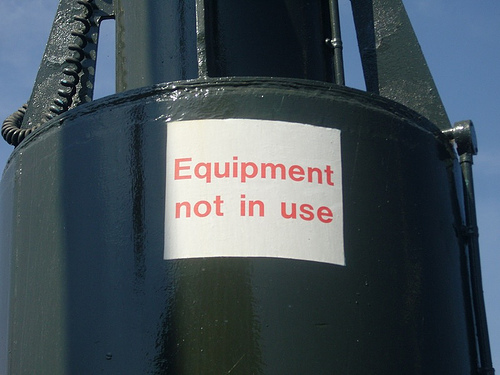
So what advice can I offer to you at this time? Firstly understand your costs. These will continue at their current rate unchecked irrespective of income and you need to understand which are fixed and which are variable. I often tell small businesses that as a rough rule of thumb most costs are 85% fixed and 15% variable so the opportunities for cost cutting are a bit limited. You may be able to reduce some fixed costs but there may be extra costs associated with doing that. Have you looked into what those might be? If you are an employer head count might become an issue. An early assessment of redundancy issues and cost is always useful should this become necessary.
Secondly, keep close to your customers and suppliers. We all recognise it takes a lot of effort to win new customers yet all too often we spend insufficient time with existing clients and all efforts into PNC’s. In good times one can keep income streams alive but when it gets hard those with the right balance will do better. Expect attacks upon your customers as with a downturn in their own incomes they may become shoppers, testing your rates and value for money. This suggests that you need to be upfront about bills with clients so that they are informed rather than ambushed.
With pressure on fees you need to be efficient in your design process. In a strong economy this is less of a problem but as things slow and customers shop you may be under pressure to deliver quicker to produce a good recovery on hours spent on the project. Clearly quality should not be sacrificed and pricing needs to reflect the hours required to deliver this before deciding your pitch price and what recovery rate this will be. A good costing system can help to identify levels of profitability on jobs.
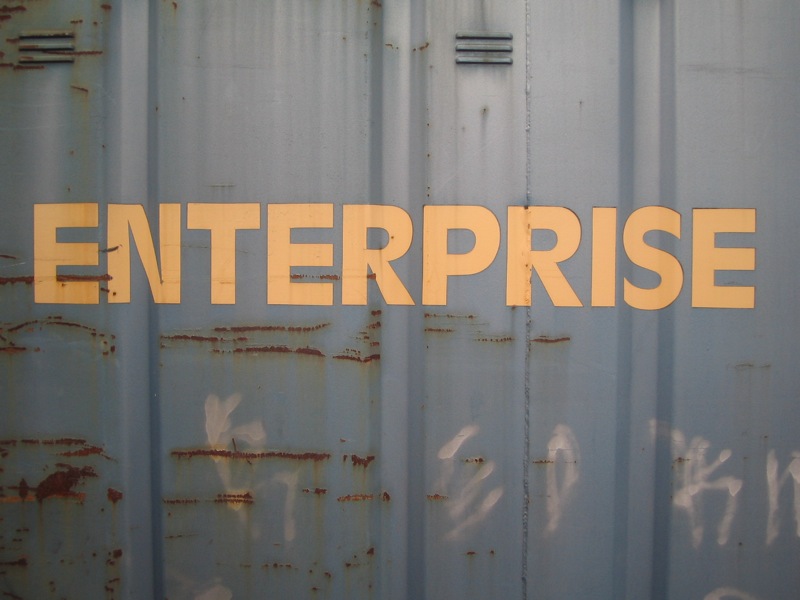
Thirdly, in testing times profits are important but cash is king. The Banks have brought this home to us very recently; clearly profitable businesses but without cash rushing to the Government in a state of panic. A cash forecast is a wonderful thing but it is only a guess. Having committed yourself to this guess and maybe secured an overdraft facility based upon it you need to compare your actual performance to it and be able to see how you might vary from it in the coming months. This does not have to take hours to do, but once done it allows you to plot what steps you might need to take to keep onside with your Bank.
Fourthly, take advice if you are unsure. That’s what the accountant is there for; to help you assess your position and provide options for you to choose from. As an example, if you cannot pay the taxman don’t wait for him to come calling. Talk to your accountant who should be able to suggest the types of payment you could make to spread the bill. My firm negotiates on behalf of those clients who need that help and know what line HMRC are currently taking.
Before providing the Bank with bad news talk through your message and reports so that you are happy they are hard to turn down rather than hitting the wall with a “NO”. I would expect to know a local banker and be able to discuss the plan with them if required to ensure that it gets a fair hearing upon presentation.
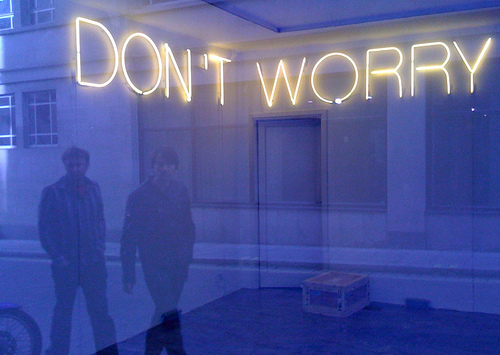
And lastly, never give up. I expect to lose some clients during any slowdown but I hope to win some new ones to replace them. Don’t allow yourself to lose confidence - you can do this by being proactive. And if things look very bleak remember something can always turn up as a few Sundays ago showed us with a win against Bolton and goals for both Bent and Pav!
Nick Forsyth is a Partner with Lambert Chapman LLP a firm of Chartered Accountants and Business Advisers in Essex who delivers straight talking advice to his clients and is involved in the Firm’s marketing as a speaker and author in the firm’s publications, website and blog. He can be contacted at [email protected] quoting “Noisy Decent Graphics” for a reply to any questions you might have.
Posted at 07:15 in Guests, Recession Series | Permalink | Comments (1) | TrackBack (0)
Nov 11, 2008
Recession: Simple Advice for Designers | 1. New Business
Here's the first in our series of Guest Posts on the recession. Good sensible advice for designers.
Adam Whittaker is one of the founders of Reardon Smith Whittaker (commonly referred to as RSW) a new business agency in London. Here's what he's got to say.
- - - - - - - - - - - - - - - - - - - - - - - - - - - - - - - - - - - - - - - - - - - - - - - -
I worked at a branding and design firm during the last recession and set up RSW as a result of my experiences there. So here is my advice …
Get rid of as many non-fee earners (suits) as possible and find your optimum size. You could well find that you could be twice as profitable if you were half the size.
If necessary take out a long-term loan to buy your way out of an expensive lease and move into smaller offices more appropriate for your new, leaner, meaner, size.
It may hurt a little, but cut back on the perks. Personal as well as staff. Do you really need the pool table or the foosbol table? They take up 100 square feet each. And reception; how often do your clients visit you? Is it important for them that you have a swanky reception area?
Get mean with your new business team. If they’re not winning enough, get rid of them and don’t immediately replace them; give it a try yourself. Nothing sells as well as a hungry business owner.
Register at www.agencyfinder.eu if you’re in the UK or EU or www.agencyfinder.com if you’re in North America. It’s a no-brainer and relatively risk-free new business introduction service.
IF YOU’RE A REALLY GOOD SALESMAN then use a new business agency to get you some face time with new prospects. Your time should NOT be spent on the phone, but on the road!
Ditch the PowerPoint. Talk to people (that’s all they are, people, like you an me) about the things you’ve done and show them examples, preferably real-life, if not, then real photographs. You want them engaging with YOU, not a computer screen.
Swallow your God damn pride. Win without pitching? More like fail without trying!! Pitching DOES NOT cost money if you’re paying the wages of the designers anyway and you don’t need to invest in research or photography. Make a commercial decision for each individual opportunity based upon your situation at the time.
Ask for 50% of the fees up front. Sure, they won’t always agree, but if you’ve made them like you enough, you’d be surprised just how many agree.
Pray.
Posted at 08:42 in Guests, Recession Series | Permalink | Comments (6) | TrackBack (0)
Nov 10, 2008
Introducing Recession: Simple Advice for Designers
Right then, let's talk Recession.
There is a recession coming. People have been unsure for a while, but that uncertainty has faded. It's coming. Here at NDG our job is to help you through these difficult times with jokes, tea and Guest Posts. So all this week we're going to be running a little series on the Recession. Err, we can't think of a better title than 'Recession: Simple Advice for Designers' so feel free to suggest one in the comments.
Anyway, recession is probably going to affect the listenership of this blog significantly. Most of you work in small, owner managed businesses and traditionally marketing budgets get hit hard by a downturn. So we've rounded up a series of experts to comment on various aspects of the recession. From New Business, through Accountancy and various other disciplines these Guest Posters all have some suggestions to help you out and crucially they have two things in common. One, they are not the usual suspects, they may blog elsewhere but you probably won't be that familiar with them. Secondly, they are wise enough to have seen a recession before and to have some experience of the difficult times.
So that's this week. But before we do all that, I'm going to add my bit. I'm not going to offer any practical advice at all, I'm just going to talk about Credit Crunch graphics.
I've mentioned before how miserable the Credit Crunch Graphics have been. Truly woeful. I was kind of hoping for something better. It's just been the usual fare of downward arrows and red boxes.
There's been some funny stuff, and as you'd expect the British tabloids have risen to the challenge. This Sun front page from the morning after the Bailout being a highlight.
Talking of the Bailout here's The City the morning after that historic event.
Err, doesn't look any different does it? As Chris correctly points out it's very, very hard to picture intangibles. As anyone who has ever worked in Pharmaceutical advertising will tell you, it's very hard to depict things like 'ill, but better than a few weeks ago' just like it's hard to depict 'my mortgage now costs £50 a month more' in a concise witty way. Which is why most newspapers revert to pointy red boxes.
If all else fails they resort to the dramatically distorted depiction.
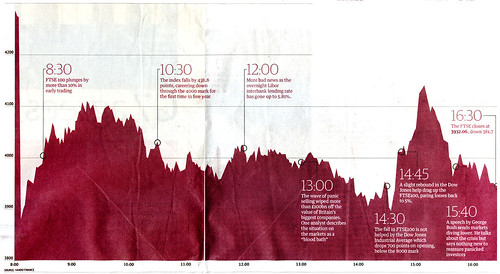
You'd think in this day and age Data Viz would help us out wouldn't you?
Phil has a brilliant post over on his blog about this chart. There's lots of peculiarities here. Apparently the FTSE started at 1000 so possibly showing the zero line would be pointless. However, the graph does significantly distort the truth to make a point. But then maybe that is the point. To show you the drama of one day? Whichever, Phil went to the trouble of redrawing the graph with a zero line to inject some reality into proceedings.
That's good isn't it? Illuminating. But it's still not perfect. The best stock market chart I've seen inevitably comes from the brilliant Khoi and the gang over at the New York Times.
It's hard to see in that screen grab, but this brilliant interactive graph compares the current fall in stocks to other falls in history. It makes for scary reading.
This is a cool thing by the Banksyesque K-Guy, witty and well done. It's clever and very of the moment.
Actually I'm surprised we haven't seen more of this kind of stuff. Surely something like this would suit a Guardian front page? I did see this leaflet for a Princes Trust event. Close, but no cigar. Definitely no cigar.
So there you go.
Simple, honest, practical advice will follow this week. Don't miss it. A see if you can think of a better title than 'Recession: Simple Advice for Designers'.
(I ought to mention that all those pictures were taken from the Credit Crunch Graphics Flickr Pool and they all link back to their original pages. Thanks to the photographers!)
Posted at 15:16 in Credit Crunch Graphics, Recession Series | Permalink | Comments (4) | TrackBack (0)
Nov 07, 2008
Large Type Killer
Posted at 07:35 in Graphic Design Industry Stuff, The Design Disease, Typography | Permalink | Comments (1) | TrackBack (0)
Nov 05, 2008
Portland

I'll be in Portland, Oregon at the end of November and I wondered if anyone fancied meeting up for a coffee? Is there a coffee morning in Portland?
Maybe we can start a Portland Beersphere? Leave comment or email me.
Posted at 13:31 in Just Me Doing Stuff | Permalink | Comments (8) | TrackBack (0)
Nov 03, 2008
Answers from Matt Dent
I guess with a name like 3 Fish In A Tree it's apt that their office should have some of characteristics of a goldfish bowl.
I don't mean that in a bad way, I'm sure there are lots of you reading this who would swap your office for 3 Fish In A Tree's place in the Oxo Tower on London's Southbank. It's a vibrant community where tourists and jewellery makers mix freely. It also means 3 Fish effectively work in a shop and anyone can look in, hence the goldfish analogy.
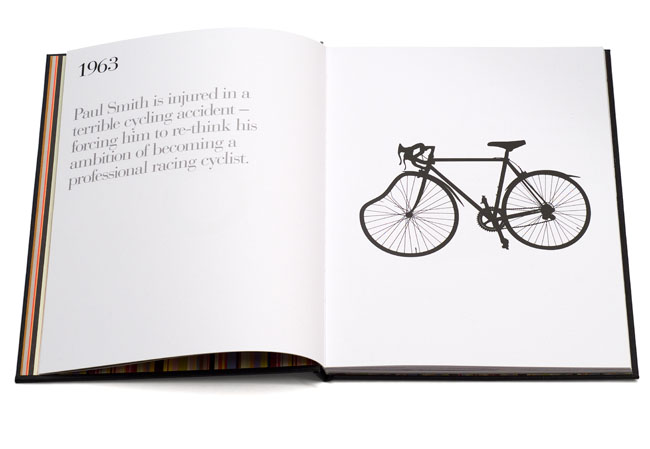
3 Fish's work for Allied London
From the outside I can see seven designers, one account manager and one studio manager. I'm here to meet one of the designers, Matt Dent. Some of you might remember that Matt spoke at Interesting 2008 and that he is the designer of The Royal Mint's new coins.

Matt and his colleague Chris Davies have both been promoted to the role of director at 3 Fish. This follows eight years of growth for the company; during which time they've worked for clients such as Olympus, Samsung and GB Airways.
“We are winning some great creative work at the moment against some big-hitting agencies,” 3 Fish founder Ricky Oh observes. “Matt and Chris are directly responsible for making that happen. Their promotion just recognises that fact.'
Before I put your questions to Matt, I sat down with Ricky and Matt and we chatted more generally.
Let's start with that name. In 2000 when Paul and Ricky started 3 Fish In A Tree they where searching around for a name and Ricky remembered a rhyme from Dr Seuss he used to read his son. "Three Tree / Three fish in a tree / Fish in a tree? / How can that be?" and so it stuck. 3 Fish In A Tree was born.
Matt's been with them for 3 and a half years and has possibly the oddest route in to a job as graphic designer I've ever heard. After Matt left college he travelled to London all the time looking for jobs, with no success. So he went to New Zealand for a year. When he came back he signed on. At the same time 3 Fish In A Tree had placed an ad with the Job Centre. Ricky says they got all sorts of odd letters. Lots of ones along the lines of, 'I have no qualifications but I've got to apply for this job to keep getting my benefits, that said being a graphic designer sounds like fun...' Eventually this process turned up Matt.
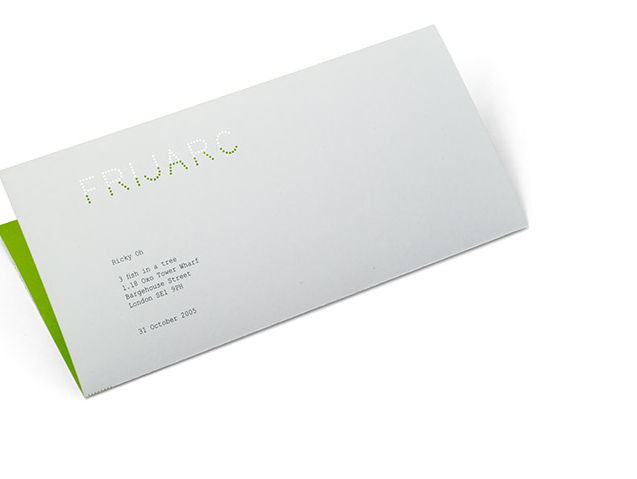
3 Fish's work for frijarc
Matt first worked on a rebrand for a firm of lawyers. That was a big project taking 3.5 years. Apparently the hardest thing about that project was the franking stamps. They kept getting lost in the post. And now Matt's a director of a 9 strong design firm at the age of 27. Ricky goes on to say, "If you're responsible for bringing in work and managing clients then you can be a director. Everyone can be a director."
We spoke a lot about Recession. They're not unduly worried by this. In what I think will be a familiar tale up and down the land there will be tightened belts but nothing drastic. They were due to expand into the unit next to them but a client just got bought out and so this is on hold. They don't see the company growing much beyond 15 people, "Stay small, do good work. Good work for good clients and stay profitable."
And then I asked your questions.

Look! Matt Dent signed my coins!
Why was the £2 coin left out of the collection/design?
It wasn't in the brief. 1-50p only. The pounds have a separate strategy that they are updated regularly, but it was but in the collection because it acted as a unifier.
Who would win in a fight between Chrissy Waddle and Cinderella ? No rules.
Gut feeling - Chris Waddle.
What other class of everyday objects would he like to give a systematic overhaul?
The thing I'd like to design above all else would be a tree house. The one constraint is that it would have to be practical; it would be designed with a particular tree, a particular set of branches, in mind. I like the idea of choosing the right spot so that some of the tree's branches shield the house from view, so from certain angles it was invisible. It would also be completely dismantleable. You wouldn't know when it was there, and you'd be none the wiser when it wasn't. I'd probably then need to design a map to find my invisible tree house.
What other concepts did you toss around before coming to and settling on the Royal Arms?
They asked for 6 designs that represented the UK, but there's 4 countries in the Union. Initial idea was a landscape, but then I realised that heraldry makes a nice mass of objects.
What has been the establishment’s response to his groundbreaking design and will he be doing stamps next ?
I would love to do stamps. The enthusiasts magazine liked them a lot. The enthusiasts (and particularly their magazine) have a lot of clout.
Why did he decide to work for that company... their website looks crap?
You should ask him why he’s working at such a dodgy company?
I think it's a good website. It's only a matter of time before 3 Fish In A Tree gets the recognition it deserves, recently we've been beating CDT in pitches, so I don't agree that it's a dodgy company.
How long did it take him to do the coin design... i.e. 3hours... 2days...?
I was involved in some capacity for 2.5 years. The first stage was to present vector drawings of the designs and then I developed it with the people at the Royal Mint. For a long time it was down to me and one other guy.
(Matt emails this extra information afterwards.) It was a design produced by David Gentleman. And strangely enough, his designs (although of different subject matter) like mine had an order to it, a sequence. His sequence was determined by the development of an oak tree, beginning as an acorn on the penny, maturing to a majestic tree by the fifty pence. Each design was supported by the elegant typography of the coin’s denomination and framed by the border of the coin. The crisp lines of the design, together with the simplicity in the arrangement of the typography gave the set a clean, bold approach. A lovely series.

Why are there no numerals on the coins?
Numbers aren't normally used. They don't have numbers on US coins, for example. The only reason you're used to seeing them is that they were put on the last set of coins because they were produced for decimalisation and it was thought that the numbers would help people understand the concept. (The coins are updated periodically. Their last major overhaul was for decimalisation which happened to be 40 years ago. These designs are likely to remain in production until the Queen is succeeded - there is no fixed timescale.).
What’s your favourite money? Other countries etc?
I liked the old Irish ones before the Euro, they had animals, fish and cows and stuff. And everyone likes the Australian notes, the unrippable ones.
What were you working on this morning?
Researching an online game for a major airline.
Tell me about 3 Fish In A Tree. Why’s it called that?
"THREE TREE / Three fish in a tree / Fish in a tree? / How can that be?" taken from the Dr Seuss book.
How many people from your BA course are designers now?
There were 37 on my course, about a third of them are designers now.
Thanks to Matt and Ricky for a good chat and a nice lunch. If you wanna find out more Creative Review did a more in depth interview with Matt in April.
Recent Posts
- Years in the domain, like tears in the rain
- Printing is still too hard
- No innovation until everything works
- "They'll be dancing in the streets of Total Network Solutions this evening"
- It was a pleasure
- Public Digital has won a King’s Award for Enterprise in International Trade
- Kids describing fashion ads
- Art at Mount St Restaurant
- Post match squeeze
- Unbelievably tickets are still available

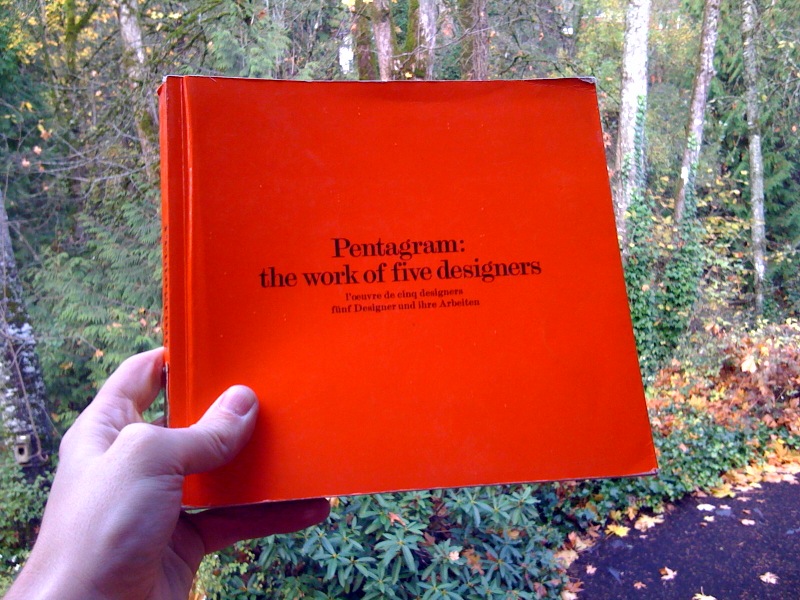
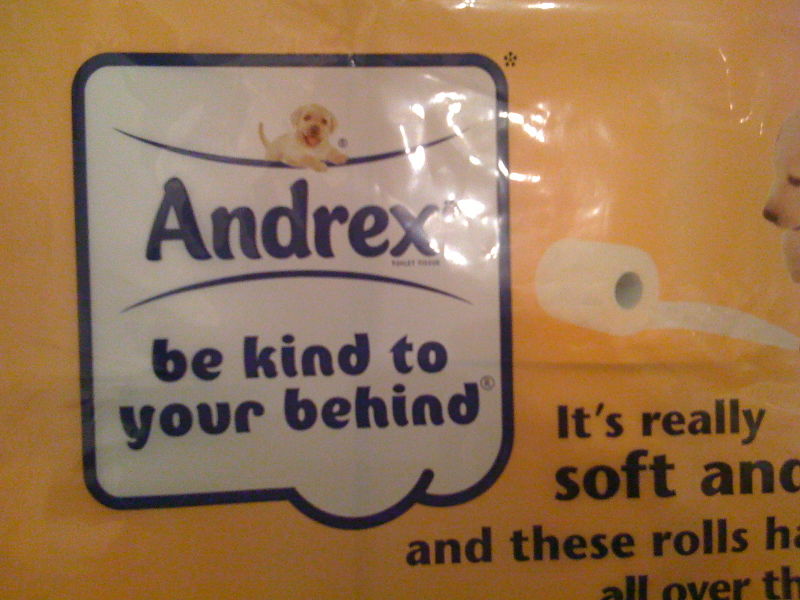

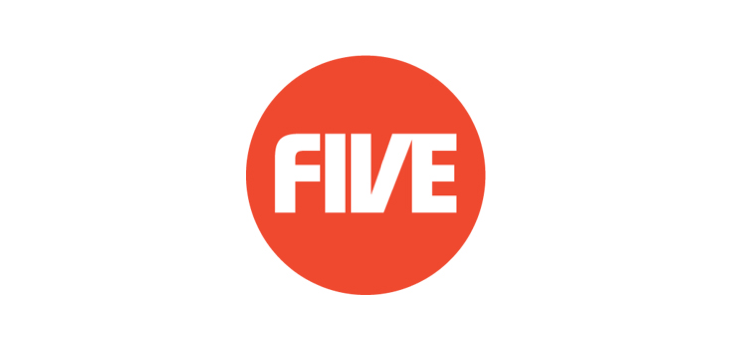
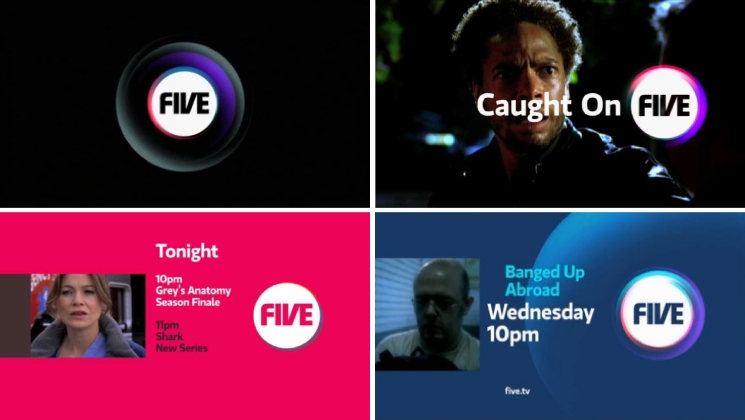



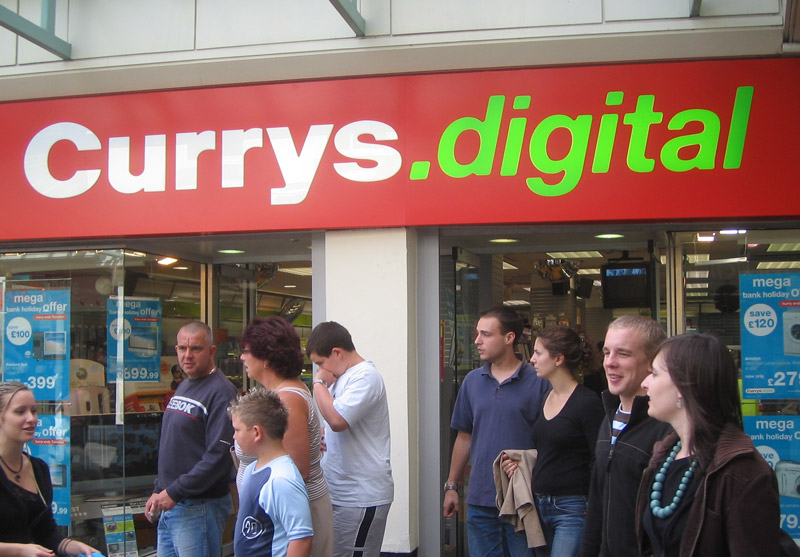
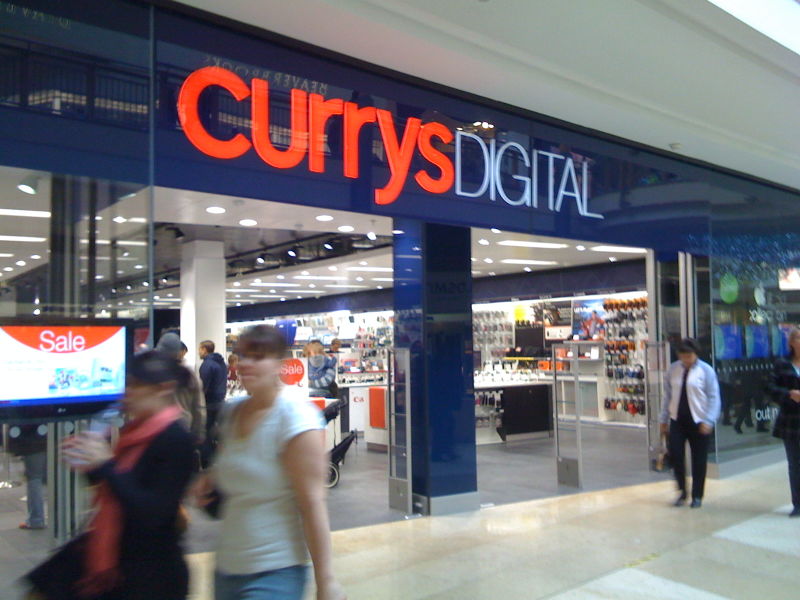





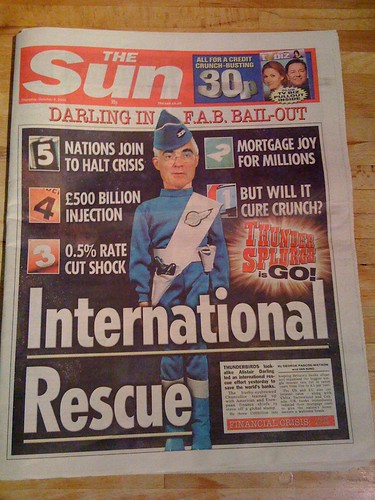
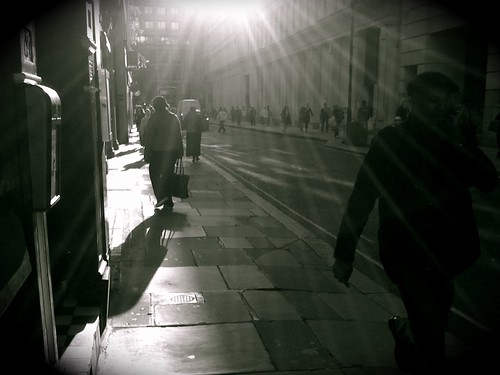
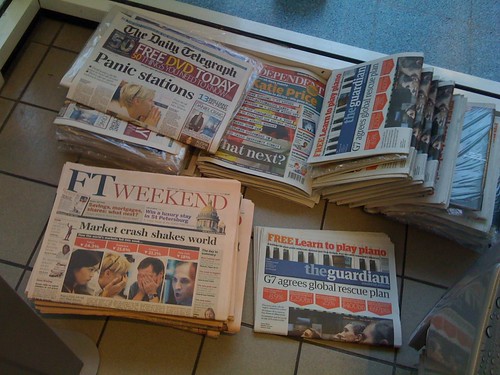
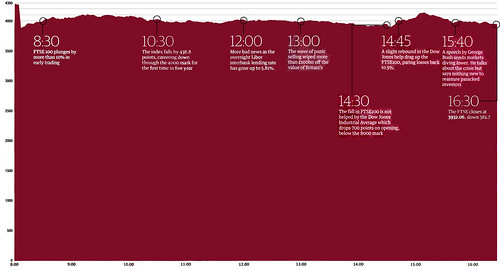
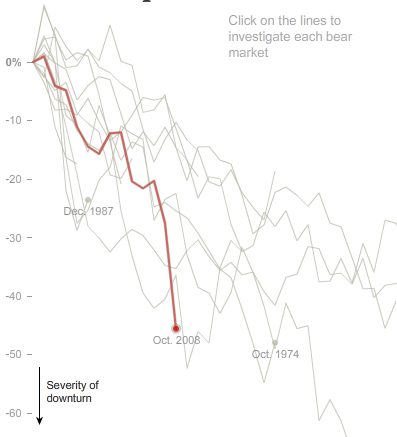
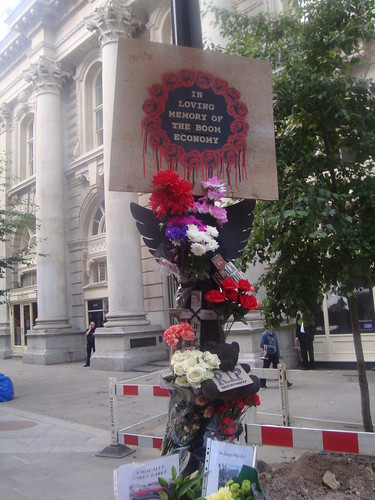
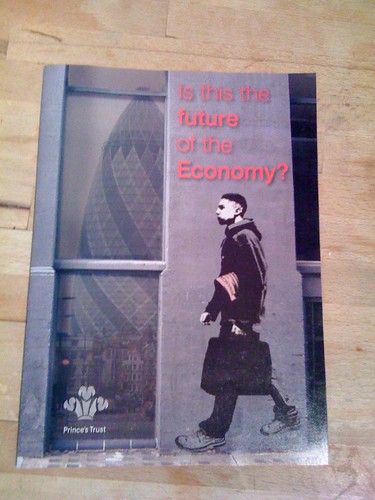
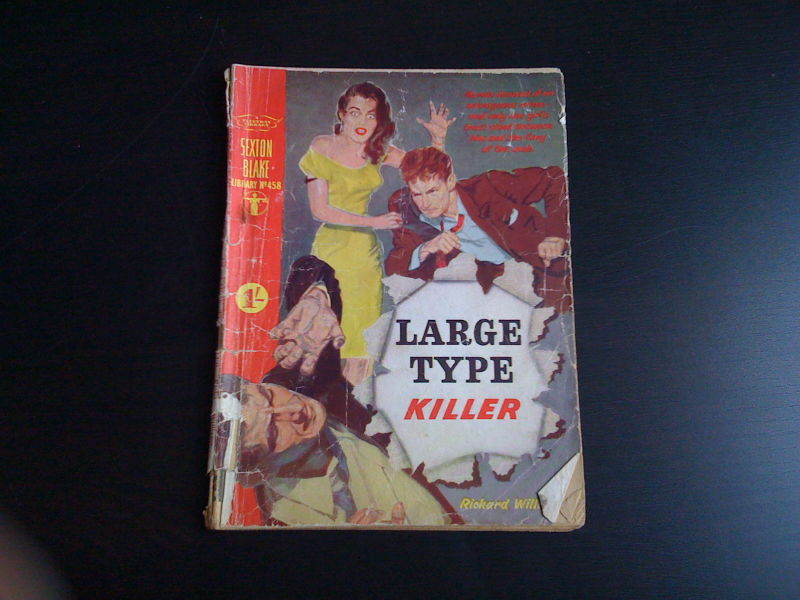
Recent Comments